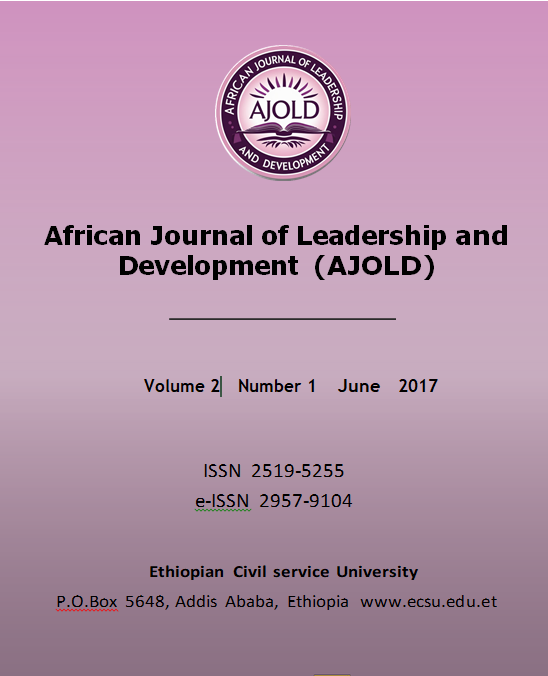Measuring Housing Stress in Rental Condominiums: The Case of Public Service Employees in Akaki – Kality Sub-city, Addis Ababa
DOI:
https://doi.org/10.63990/2017ajoldvol1iss1pp56-73Keywords:
Housing Stress, Rent, CondominiumAbstract
The study aimed at assessing the level of housing stress as a consequence of rent and non-rent factors of housing stress encountered by renter public sector employees. To meet the objectives of the study a mixed research approach was employed to use both quantitative and qualitative data. A questionnaire survey was carried out to collect the required data from 385sample households who are renter public sector employees. Secondary data collected from both published and unpublished documents. Tables and percentages to show variance, the ’30-only rule’, and mean income analysis employed to show the level of housing stress as a function of rent and income. A multiple response analysis is applied to assess the impacts of rent on non-housing needs to indicate the level of housing stress. A bar graph is applied to show the distribution of renter households by work place. The findings reveal that all renter public sector employees are suffering from housing stress caused by both rent and non-rent factors. The majority of the renter households pay a monthly rent above the 30 percent threshold and unable to meet other non-housing needs adequately after paying for housing rent. Regarding the non-rent factors, all renter households are free from housing stress emanating from housing crowding but over half of them are exposed to housing stress due to daily commuting between work place and home. Finally the study recommends the implementation of market based rent allowance and strategies to enable renter public service employees to be house owners.
Downloads
Published
How to Cite
Issue
Section
License
This work is licensed under a Creative Commons Attribution-NonCommercial 4.0 International License






